Installing an RV waste gate valve with an insulated underbelly can seem like a daunting task, but by following our simple step-by-step guide, you can remove the guesswork and install it to your satisfaction. With clear instructions and tips, you’ll be able to troubleshoot common problems and get everything set up quickly and efficiently. Keep reading to get all of the information you need to install your RV waste gate valve with an insulated underbelly!
Table of Contents
What is an RV Waste Gate Valve?
A Recreational Vehicle (RV) waste gate valve is a specialized plumbing component that helps regulate the flow of wastewater from an RV. It can be used to prevent wastewater from backing up in the pipes, as well as help control water pressure and flow rate. The valve works by allowing only a certain amount of liquid to pass through at a time. If more than this amount is attempted to flow, the valve will close and block it from passing. This helps protect plumbing systems from high pressure and excessive water flow. Additionally, it can help ensure that wastewater is disposed of properly in an efficient manner.
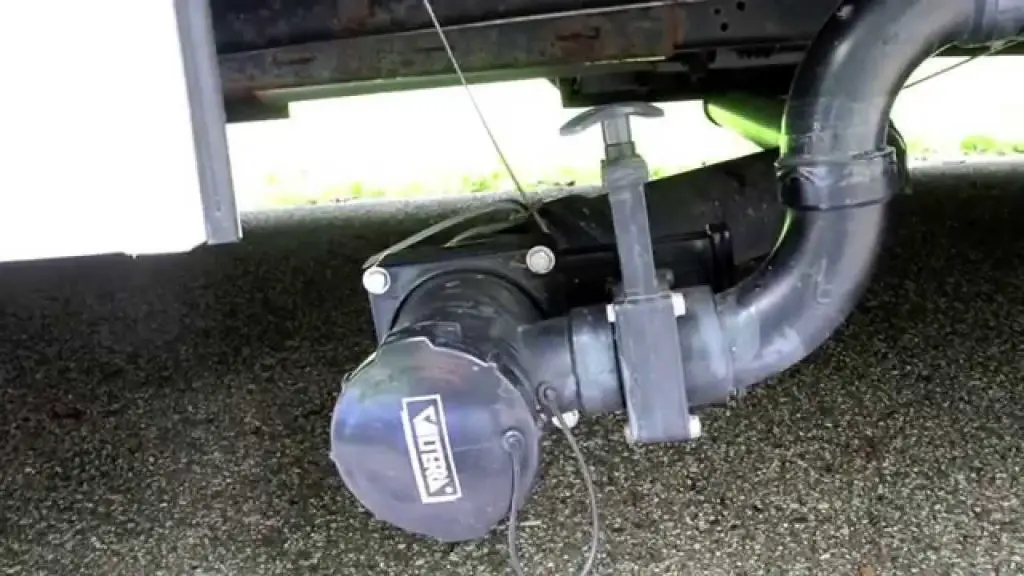
RV waste gate valves come in a variety of different shapes and sizes depending on the specific needs of the RV owner. They can be manually operated, or they may feature an automatic shut off system if the pressure reaches a certain level. It is important that these valves are installed correctly and maintained regularly to ensure proper operation and prevent potential plumbing problems.
Using an RV waste gate valve can help reduce water damage caused by overflowing wastewater. Additionally, it can help to conserve water resources by regulating how much water is used from the RV’s holding tanks. With a properly installed and maintained waste gate valve, Rvers can enjoy the convenience of having clean running water while also protecting their plumbing systems.
When installing an RV waste gate valve, it is important to follow the manufacturer’s instructions carefully. This will ensure that the valve is functioning correctly and providing optimal protection for the RV’s plumbing system. Additionally, it is important to regularly inspect and maintain the valve for any signs of damage or wear. This will help keep the valve functioning properly and ensure that wastewater does not back up in the pipes. It is also a good idea to check the pressure reading on the valve occasionally to make sure that it is operating within acceptable limits [1].
Reasons and Signs You Need To Replace Your RV Waste Gate Valve
Determining when to replace your RV waste gate valve requires careful observation and attention. Here are some of the key signs that you need to pay close attention to:
- If there is a clog or blockage in the valve, this can prevent proper water flow and cause damage to the valves.
- If the valve is leaking, it could lead to extensive water damage and other issues.
- If the valve is not functioning properly, it could indicate that there is an issue with the seals or gaskets that need to be addressed.
- The age of your RV waste gate valve can play a role in determining if you should replace it. Valves typically last between five and ten years, depending on how well they are maintained.
- Corrosion can also be an issue that affects the performance of your valve. If you notice any signs of corrosion, it may be time to replace the valve.
Replacing your RV waste gate valve is an important step in maintaining your recreational vehicle and ensuring its longevity. If you have any questions or concerns about your current valve, be sure to consult a professional before attempting any repairs. With the proper care and maintenance, your RV waste gate valve will be working properly for years to come.
It is also important to regularly inspect your RV waste water systems and valves for signs of deterioration or damage. It is much easier (and less expensive) to replace a valve before serious damage occurs. During your inspections, be sure to check for any signs of clogging or blockage as well as leaks. Taking care of minor issues now can help you avoid costly repairs in the future.
Your RV waste gate valve is essential for ensuring proper water flow and preventing damage to your recreational vehicle systems. Paying close attention to signs of wear and tear can help you make sure that your valve is functioning properly and prevent extensive damage. If you think that it may be time to replace your RV waste gate valve, be sure to consult a professional for advice before proceeding with any repairs or replacements.
Install Your RV’s Waste Gate Valve in 3 Simple Steps
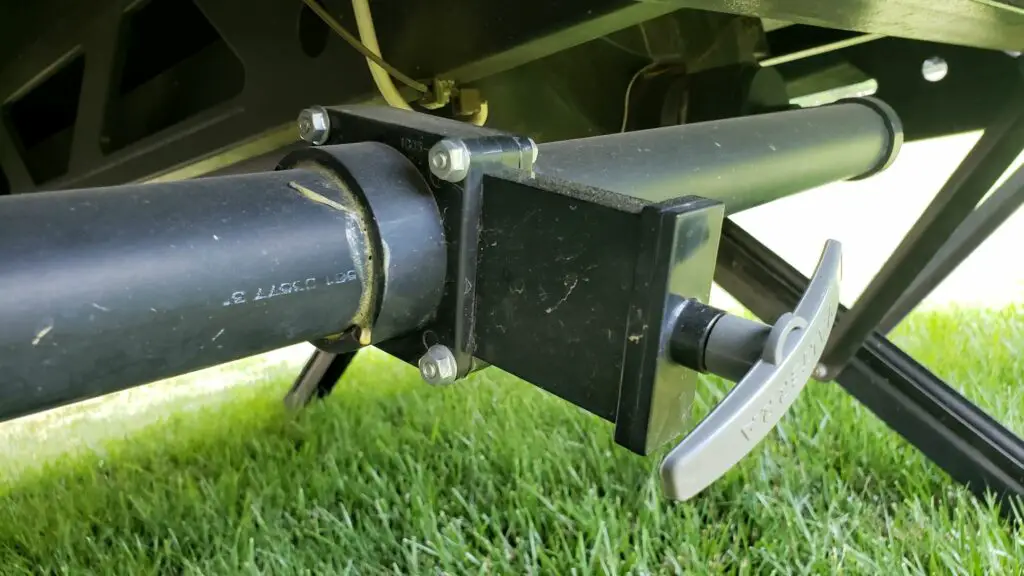
The Tools You Need
Before you begin, you’ll need a few basic tools:
- A Phillips head screwdriver
- Pliers
- Wire cutters
Step 1 – Prepare the Waste Gate Valve
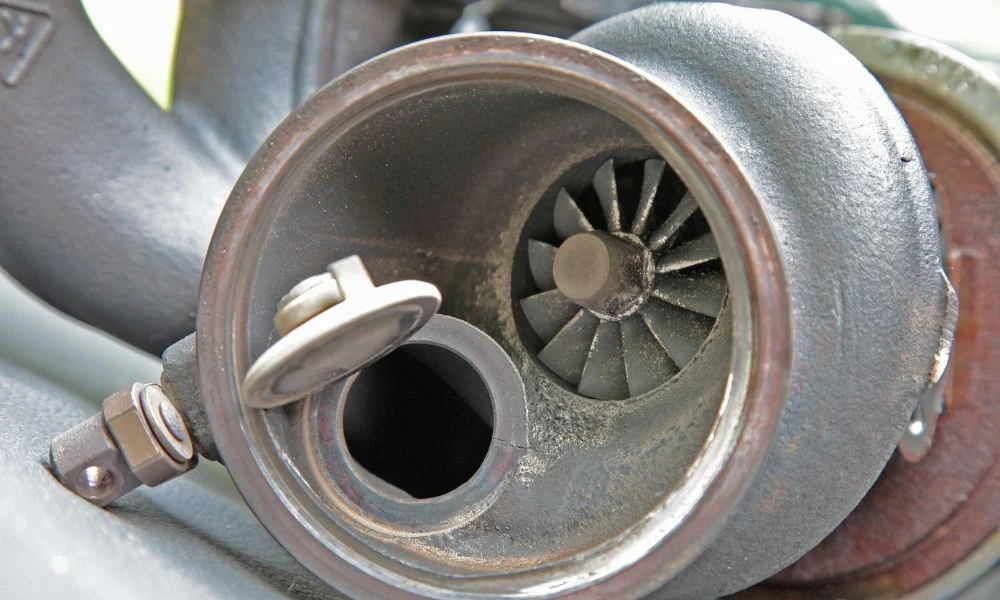
The first step is to prepare your waste gate valve before installing it. Start by unplugging the RV’s water supply line and turning off the water main. Then, locate the waste gate valve, which should be a metal or plastic cylinder located near the RV’s water source.
Once you’ve located it, use your pliers to loosen any clamps that are holding the valve in place. Then, remove the old valve and discard it according to your local disposal regulations.
Step 2 – Install the New Valve
Now that the old valve has been removed, you can begin to install the new one. Start by attaching your hose to the inlet side of the valve. Make sure it’s fitted tightly and securely before moving on to the next step.
Next, attach the other end of the hose to the RV’s water supply line. Push it on firmly and use the pliers to secure it in place. Finally, connect the valve’s outlet hose to the RV’s water drainage system, making sure everything is securely attached before moving on.
Step 3 – Test the Valve
Now that your new valve is installed, it’s time to test it out. Turn the water main back on and check for any leaks. If there are none, you can proceed to the next step.
Now your RV is equipped with a reliable waste gate valve that will help keep it functioning properly. Be sure to check the valve periodically for any signs of damage or wear, and replace it when needed. With proper maintenance, your new waste gate valve should last for years to come [2].
How to maintain RV Waste Gate Valve?
It is important to maintain the RV Waste Gate Valve in order to ensure that it does not become blocked or damaged. It should be regularly inspected and cleaned. If any debris or build-up is found, it should be removed immediately. Make sure to lubricate the valve periodically, as this will help keep it operating properly and extend its lifespan. Additionally, check for any signs of wear and tear, such as cracks or corrosion. If any of these signs are present, the valve should be replaced to prevent further damage.
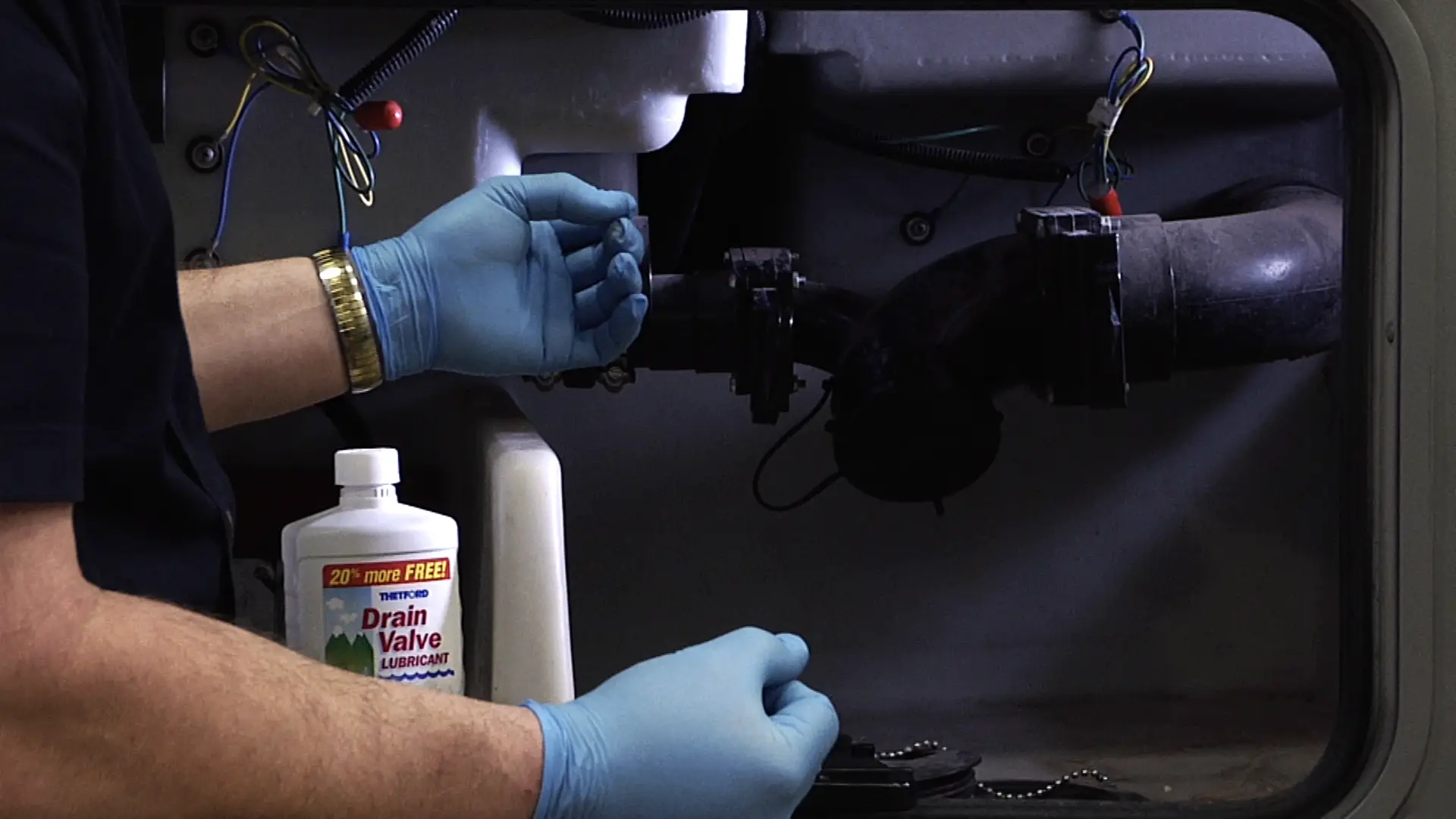
Regular maintenance is also important when it comes to the RV Waste Gate Valve’s pressure setting. Check the operating manual for instructions on how to adjust the pressure as needed for your particular unit. Additionally, you can check the pressure with a gauge to ensure it is within the manufacturer’s recommended range. If you notice any changes in the functioning of your RV Waste Gate Valve, take action as soon as possible to prevent further damage or malfunctioning.
Finally, remember that proper maintenance and upkeep of your RV Waste Gate Valve will save you time and money in the long run. Taking the time to ensure that all of its components are functioning properly and free from debris will help you get the most out of your RV’s wastewater system. Additionally, regular cleaning and inspection will help you catch any problems before they become serious issues. With a little bit of care and attention, you can make sure that your RV Waste Gate Valve is always in top working order [3].
FAQ
Should I get underbelly insulation for my RV?
Yes, underbelly insulation is an important part of insulating your RV. It can help keep the interior cool in summer and warm in winter, reducing your need to use heating and cooling systems. Underbelly insulation also helps protect against moisture buildup that can lead to mold or rot. Investing in underbelly insulation for your RV can save you money on energy costs and keep your ride in good condition for years to come.
If you’re considering underbelly insulation, make sure to select a product that will work with the material of your RV’s underside. Also consider whether polystyrene foam or compressed fiberboard is best suited to meet your needs. Before beginning any kind of insulation project, consult with an experienced professional so you can make sure you’re doing it right.
How often should I check my RV’s roof?
Checking your RV’s roof regularly is essential for preserving its structural integrity. It’s recommended to inspect the roof of an RV every 6 months, or at least twice a year. During these inspections, look for any cracks, holes, or other signs of wear and tear. Pay special attention to the seams, which are common points for leaks. If you find any damage, it’s best to have a professional make repairs as soon as possible.
In addition to regular inspections, you should also check your RV’s roof every time you stop for gas or after any particularly long trips. This will help you catch any potential issues before they become serious. Keeping an eye on your RV’s roof will help ensure it lasts as long as possible without needing major repairs.
What kind of maintenance should I do on my RV?
RV ownership involves regular maintenance to ensure your vehicle remains in good condition. At least once a year, you should have a professional inspect and service the RV to make sure all systems are functioning properly. Additionally, it’s important to check the tire pressure and treads every time you take the RV out for a drive.
It’s also essential to keep up with regular cleaning inside and outside of the RV. This includes regularly washing the exterior, vacuuming the carpets and upholstery, and deep cleaning bathrooms and kitchen areas. You should also inspect the roof for any damage or signs of wear and tear.
Finally, make sure to check fluids such as oil, antifreeze, transmission fluid, brake fluid, power steering fluid and windshield wiper fluid. Keeping up with all of these maintenance tasks will help keep your RV running for many years to come.
How do I deal with a stuck closed valve?
If a valve becomes stuck closed, there are a few steps you can take to try and open it. First, inspect the valve for any obstructions or dirt that could be preventing the handle from opening. If nothing is found, then use a hammer and screwdriver to tap around the valve handle and loosen it. You may also want to try using lubricant on the valve, as this might help loosen it. If all else fails, contact a professional who can use more advanced methods to get it open. With these tips in mind, you should be able to successfully open a stuck closed valve and keep your RV running smoothly.

How do I maintain the wastegate valve so it doesn’t need replacing?
The wastegate valve is an important part of your RV’s engine, allowing exhaust to escape and regulating the pressure in the engine. To keep it functioning properly, you should inspect it regularly for signs of wear or damage. If you find any issues, have a professional make repairs as soon as possible.
It’s also important to replace the gasket regularly on the wastegate valve. This will help prevent leaks and keep it from getting stuck open or closed. Additionally, make sure to check the belts and hoses connected to the valve for any signs of wear or damage. Finally, it’s a good idea to have a professional inspect the valve for any potential issues every 6 months. By following these maintenance tips you can ensure that your wastegate valve lasts as long as possible and won’t need to be replaced.
How do you replace an RV waste valve?
Replacing a waste valve in an RV is a relatively straightforward process. First, turn off the water supply and drain the tank. Then, disconnect the hose from the old waste valve and remove it with adjustable pliers or wrenches. Next, attach the new waste valve to the same location as before, using sealant to ensure that it’s secure. Finally, reconnect the hose and turn the water supply back on.
How do RV waste valves work?
RV waste valves are responsible for controlling the flow of wastewater from an RV’s holding tank. The valve is typically opened when wastewater needs to be emptied, and it is closed after the tank has drained completely. This helps ensure that wastewater does not leak out into the environment or create a health hazard.
The waste valve also contains a float device which helps regulate the flow of wastewater. When the tank is full, it will raise and trigger the valve to close. This helps keep wastewater from spilling out of the tank when it reaches capacity.
How often should I empty my RV holding tank?
It’s generally recommended to empty your RV’s holding tank at least once every three days. This will help prevent unpleasant odors, as well as keep wastewater from overflowing. Additionally, it’s important to monitor the level of solids in the tank and flush with fresh water on a regular basis. This will help reduce any buildup that could lead to clogs or blockages.
If you’re going on a long trip, it’s best to empty your RV’s holding tank before you leave so that you don’t have to worry about it while traveling. By following these steps, you can help ensure that your RV’s holding tank remains in top condition and doesn’t become a health hazard.
Useful Video: How To Replace RV Sewer Gate Valve in UNDER 10-MINUTES
Conclusion Paragraph
To to install an RV waste gate valve with an insulated underbelly, the process is fairly straightforward. It requires some knowledge of plumbing systems and a willingness to work with exposed materials. As long as all the parts fit together properly and are securely attached, your RV will be set up for many years of happy travels! With that in mind, it’s important to choose high-quality components when assembling your waste gate valve system. That way you can be sure you won’t have to replace them any time soon, or risk serious damage with a shoddy installation. With the right parts and a bit of care taken during assembly, you’ll enjoy peace of mind knowing your RV is equipped with an efficient waste gate valve system.
References:
- https://campaddict.com/rv-holding-tanks/waste-valves/
- https://gonecamping.net/install-rv-waste-gate-valve-insulated-underbelly/
- https://www.rvrepairclub.com/video/maintaining-an-rv-waste-valve-008161/

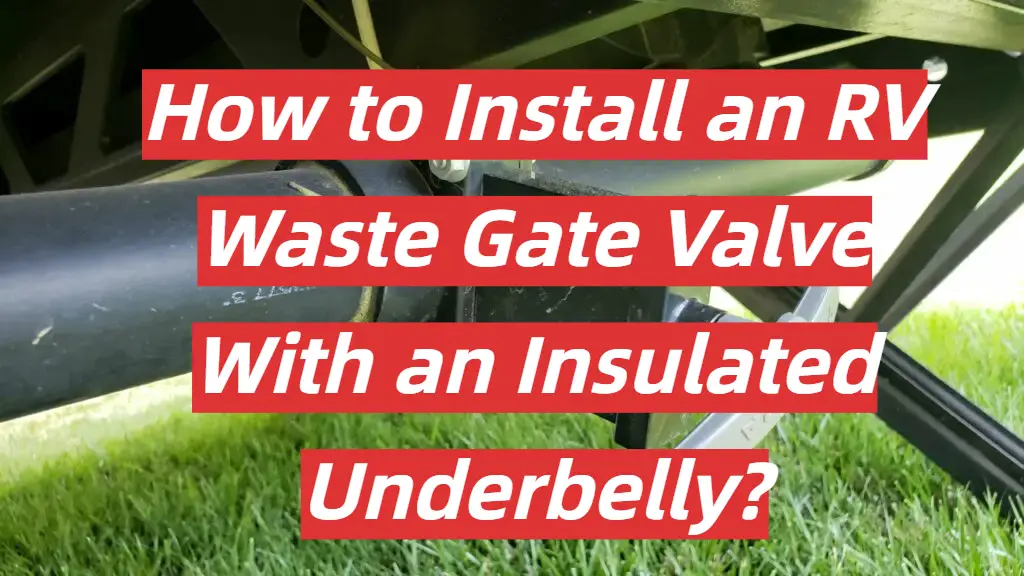
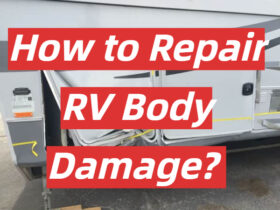
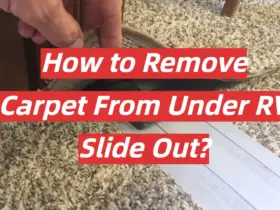
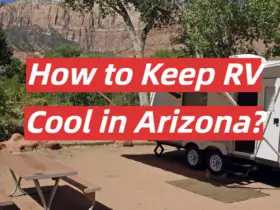
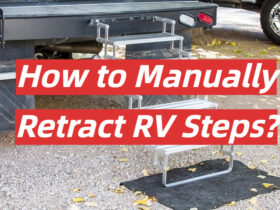
Leave a Reply